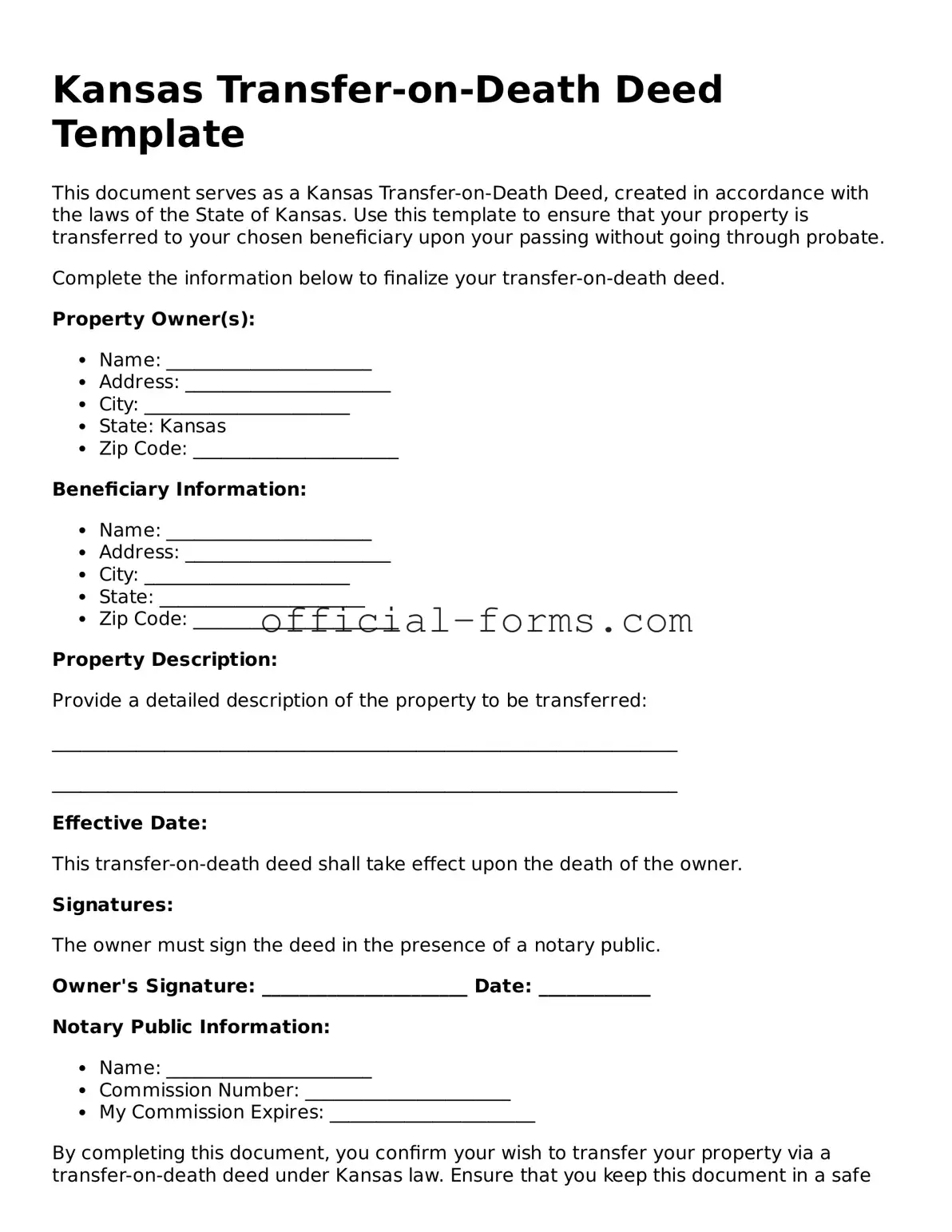Official Kansas Transfer-on-Death Deed Document
A Kansas Transfer-on-Death Deed form is a legal document that allows property owners to transfer their real estate to beneficiaries upon their death, bypassing the lengthy probate process. This deed provides a straightforward way to ensure that your property is passed on according to your wishes. Understanding how to properly use this form can help you secure your legacy and simplify the transition for your loved ones.
Open My Transfer-on-Death Deed Now
